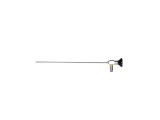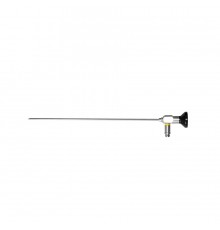
Optical Endoscopes: Clear Images of Any Hard-To-Reach Area
What makes an optical endoscope, or a super thin endoscope, so special? It is an optical tube that allows visual inspections of inaccessible places. There are two types of devices: rigid and flexible.
2 typical functions integrated into both flexible and rigid boroscopes:
- Vision function (optical or opto-electronic system). Both types of endoscope include a cable for image transport and , and a viewing device (the eyepiece or video monitor type).
- Illumination function/lighting system (light generator). For exploring dark areas, both flexible and rigid endoscopes include a connecting cable between the generator and the shell of the endoscope. A fiber optic bundle included in the optical borescope guarantees the transfer of light between the shell and the end of the probe.
Rigid endoscopes
Rigid endoscopes have a segmentation structure of optical pillar lenses. Different types of lenses are used depending on the characteristics and size of the super thin boroscopes. This lens technology designed with gradient index glass allows the coupling of a light beam into an optical fiber with a diameter ranging from 0.35 to 2.7 mm. Thus, the image of the endoscope is retransmitted in the form of waves Used to inspect the barrels of firearms, examine engine castings, etc., they provide a very clear image through the eyepiece. .
Flexible endoscopes
Used to inspect hidden surfaces in an engine, flexible endoscopes can be as thin as 0.9 mm or 0.035 inches. An optical flexible endoscope consists of optical fibers that conduct light regardless of its length. According to the manufacturers of optical fiberscopes, the unit diameter of the fibers can vary from 7 to 11 microns. The principle is that the image formed on the input section of the beam is transmitted point by point on the output section. Industrial video endoscopes
The industrial video endoscope is a specialized flexible endoscope that allows the visualization of images delivered by a lens. The images from the video endoscope are conveyed by a high-resolution color CCD (Charge Coupled Device) sensor in the distal end of the optical tube to a video switchboard. In addition, this type of endoscope provides benefits from the tremendous technological advances in the industrial endoscope camera sector. For example, this innovation has made it possible to offer video probes in reduced format for more precise inspection in areas deemed to be difficult to access.

